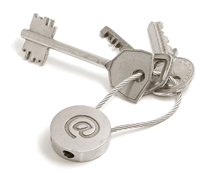Keyed In
US intelligence agencies tap into billions of call data and electronic messages monthly – reason enough to consider encrypting your email traffic.

© Kirill Bodrov - 123RF.com
US intelligence agencies tap into billions of call data and electronic messages monthly – reason enough to consider encrypting your email traffic.
Anyone sending email unencrypted needs to be aware that everyone can intercept or tap into it. Thus, it's highly advisable to encrypt your communications. Two encryption methods have prevailed over the years, S/MIME and OpenPGP. Both are open standards that are constantly being monitored for vulnerabilities by security experts.
S/MIME, like the HTTPS protocol, is based on the name-checking of commercial certificates of Certification Authorities (CAs). It's used mainly in the corporate world, whereas OpenPGP is more prevalent in the private sector. This article focuses on the open source OpenPGP that the free software GnuPG [1] provides under Linux.
In this article, I'll provide some basic guidelines for encrypting your email and explains how to encrypt and decrypt messages with the common Linux mail clients KMail and Thunderbird. This scenario can also be used with other mail programs that support GnuPG. An important part of this process is ensuring that both senders and recipients are prepared to send and receive encrypted email traffic.
[...]